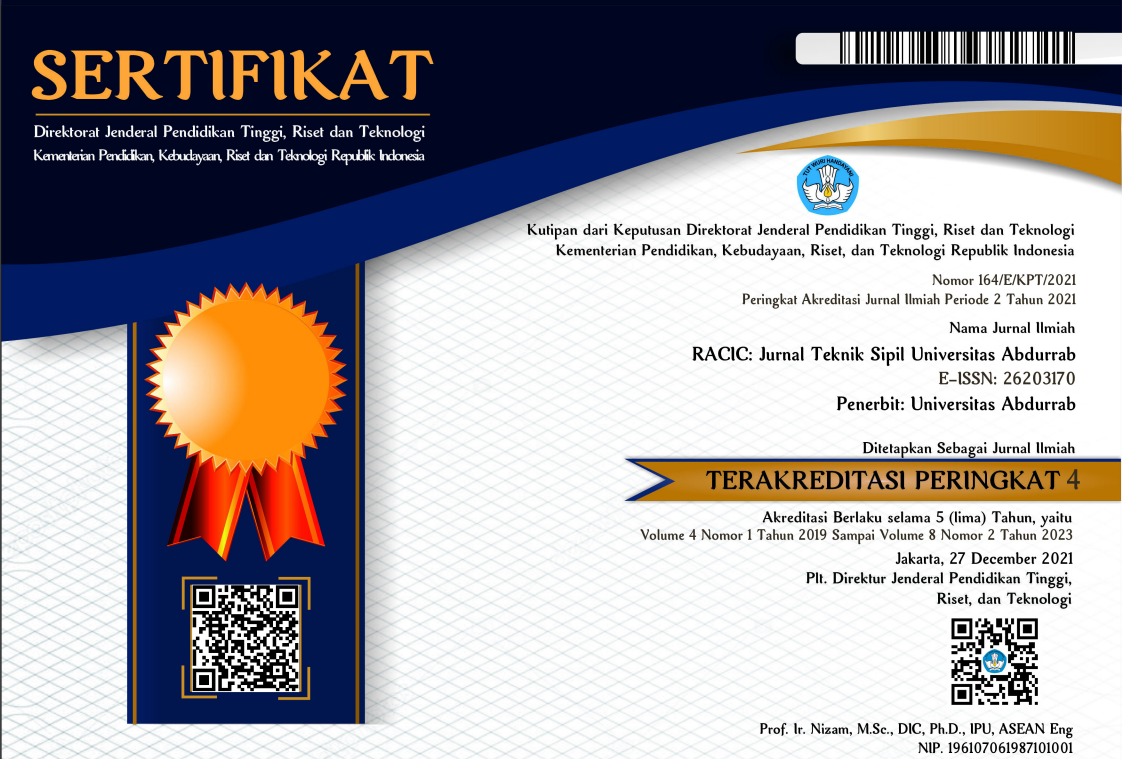ANALISIS PERBAIKAN TANAH DASAR MENGGUNAKAN METODE GEOTEKSTIL
DOI:
https://doi.org/10.36341/racic.v8i1.3103Keywords:
soil improvement, geotextile, subgradeAbstract
Soil acts as a building material in various types of civil engineering work, on the other hand land plays a role as a support for building foundations such as embankments, highways and railroads. Soil improvement is a type of soil stability that is useful as soil improvement and performance required by technical requirements. In an effort to increase the carrying capacity of the soil, several methods can be used, such as: soil improvement using Replecement Soil, PVD Method, Preloading, Micropile, Geotextiles, etc. In this study, the geotextile method was used as an alternative reinforcement to find a larger and better safety number (SF) for soil conditions adjacent to (Groundwater Table), and can be the most effective alternative soil improvement method. Based on the analysis of the data, it was concluded that the total load (q) is 31 layers of non-woven which is 2 layers, with a length of geotextile (L) of 1.825 m. The safety factor geotextile method non-woven = 2.4.
Downloads
References
Das, B.M. (1995) ‘Mekanika Tanah (Prinsip-prinsip Rekayasa Geoteknik’, Penerbit Erlangga, pp. 1–300.
Koernel, R.M. (2005) Design with Geosynthetics.
Laksono, T.D. (2011) ‘Perbaikan Tanah Dengan Menggunakan Geotekstil 19’, Perbaikan Tanah Dengan Menggunakan Geotekstil, 12(2), pp. 19–26.
Panguriseng, D. (2017) ‘Dasar-Dasar Teknik Perbaikan Tanah’, Pustaka AQ, (Agustus), p. 240.
Sopacua, Barbara N, H. (2021) ‘済無’, Angewandte Chemie International Edition, 6(11), 951–952., 7(2), pp. 2013–2015.
Downloads
Published
Issue
Section
License
1. Copyright of all journal manuscripts is held by the RACIC : Rab Construction Research
2. Formal legal provisions to access digital articles of electronic journal are subject to the provision of the Creative Commons Attribution-ShareAlike license (CC BY-NC-SA), which means that RACIC : Rab Construction Research is rightful to keep, transfer media/format, manage in the form of databases, maintain, and publish articles.
3. Published manuscripts both printed and electronic are open access for educational, research, and library purposes. Additionally, the editorial board is not responsible for any violations of copyright law.
licensed under a Creative Commons Attribution-ShareAlike 4.0 International License.





